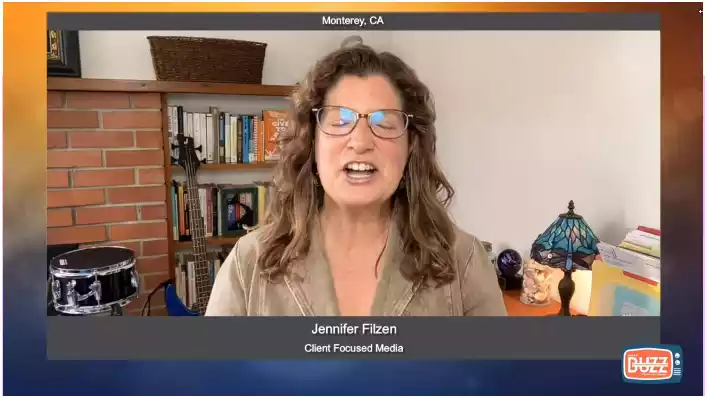Improving Efficiency in Prior Authorization: Streamlining Healthcare Approvals
Unlock the secrets to faster, smoother healthcare approvals! Discover how improving efficiency in prior authorization can reduce delays, cut down on paperwork, and elevate patient care. Dive into proven strategies and innovative solutions to optimize your workflow.

Understanding what is the difference between a referral and a prior authorization is essential in healthcare. A referral is a formal recommendation from a primary care physician to see a specialist or receive specific medical services, ensuring coordinated patient care. In contrast, prior authorization is a requirement from an insurance company for approval of a specific medication or service before it is provided, ensuring that it is medically necessary and covered by the insurance plan.
Let’s start now!
Table of Contents
Improving Efficiency in Prior Authorization

We’ll explore solutions, technology integration and streamlined workflows that can help simplify this burdensome task into a smoother more manageable process. Stay tuned as we uncover the complexities of authorization and how to enhance its efficiency.
The Significance of Efficiency in Healthcare
Efficiency in healthcare is crucial as it impacts every aspect from patient care to management. A high level of efficiency guarantees that patients receive prompt, quality care enhancing their experience and health outcomes. From a standpoint efficiency involves maximizing resources cutting down on waste and reducing costs. All factors that contribute to the financial well being of the healthcare organization. By optimizing processes, like authorization healthcare providers can not enhance their operational efficiency but also elevate patient satisfaction levels. The objective is to establish a healthcare system that offers value based care where quality isn’t compromised by cost or speed.
The Importance of Prior Authorization
Understanding the Significance of Prior Authorization in Healthcare
Prior authorization plays a role in the healthcare sector. It acts as a checkpoint to ensure that prescribed treatments are medically necessary before being carried out thereby preventing procedures and expenses. This not benefits the patient by avoiding interventions but also protects healthcare providers and insurance companies from excessive costs.
Moreover prior authorization goes beyond controlling costs. It also contributes to ensuring quality care as the authorization process involves reviewing the proposed treatment plan. This can help identify treatments that may offer outcomes or highlight any potential risks associated with the proposed treatment. Therefore prior authorization is a tool for achieving two goals in healthcare; providing quality patient care and effectively managing costs.
Examining the Impact of Prior Authorization on Cost Saving and Care Quality
Prior authorization is not a gatekeeper in healthcare; it also serves as a mechanism for controlling costs and maintaining quality standards. By requiring approval before proceeding with a treatment prior authorization helps regulate resources by preventing procedures and their associated expenses. This aspect of cost savings is crucial, for both healthcare providers and insurance companies ensuring that resources are used wisely and enhancing the sustainability of the healthcare system.
When it comes to the quality of care the prior authorization process serves as a layer of review, for proposed treatment plans. It helps to identify risks and consider treatments that could offer better results for the patient. This ensures that each approved treatment is not necessary but the best choice for the patients specific health condition. Therefore prior authorization plays a role in upholding standards of care while promoting a more effective and cost efficient healthcare system.
Challenges in Prior Authorization Today
Despite its role in healthcare the prior authorization process encounters obstacles that make it slow and burdensome. One significant challenge is the lack of consistency. The criteria for authorization vary widely among insurance companies causing confusion and inefficiency as healthcare providers navigate through distinct procedures for each insurer.
Moreover prior authorization typically involves tasks and paper based processes, such as completing forms sending documents via fax and making follow up calls. This not adds to the workload of healthcare providers but also results in delays, in patient care. Additionally there is an issue concerning transparency. Often patients and healthcare providers lack information regarding the progress of their authorization requests leaving them uncertain, about when they can move with treatment. The combination of these challenges leads to an authorization process that’s unclear time consuming and frustrating for both parties involved. As a result there is a need for systems and strategies to simplify prior authorization procedures.
I'm very thankful for Portiva who I know is looking after my practice while I'm gone the virtual assistants can manage prescription refills, documents they can triage patients and just kind of answer administrative questions and they can handle a lot on their own. But also, they're very good about contacting me if there's any emergency or anything I need to attend to. So I'm very thankful for Portiva they can help almost any provider almost anywhere and it really allows for some good work-life balance as I'm getting to experience right now at my family farm so I'm very thankful for Portiva and I'm very happy to use their services"

Board Certified Family Medicine Physician

Portiva's Virtual Medical Assistant - I have all the support I need. There's somebody checking my email, any patient messages. Patients are still able to schedule and handle any scheduling issues and any kind of billing that needs to still go through. Portiva hands handles it all for me. I have support i have somebody that I can access 24/7 pretty much. It's all very seamless. If somebody has an emergency or needs a medication called in. I know that the va's at portiva will handle that for me.

Board Certified Family Medicine Physician

Utilizing Modern Technologies to Enhance Prior Authorization

In conclusion tackling the complexities of authorization doesn’t have to be a task for healthcare professionals. By implementing technologies such as Artificial Intelligence and automation we can greatly simplify the process enhance precision and reduce time constraints. These improvements will not ease burdens on healthcare providers but also enhance transparency for patients resulting in improved experiences and outcomes, for all involved. Though it may be tough to change the way prior authorizations work, the benefits, in terms of efficiency cost savings and patient happiness make it a goal worth striving for. As we progress it’s important to keep coming up with ideas and embracing these improvements leading us toward a healthcare system centered around patients where tasks, like prior authorizations are smooth and effortless.
To learn more about providers that can enhance your medical practice. Discover more about Portiva and unlock a world of possibilities by visiting our homepage today!
- Increasing patient satisfaction with preauthorization services
- Maximizing the advantages of prior authorization
- Advanced preauthorization technology
- Addressing security concerns in prior authorization processes
- Providing quality patient care with preauthorization
- Preapproval technology advantages
- Rising to the prior authorization challenge
- Utilizing precertification technology
- Tips on implementing precertification services
- Reviewing outsourced services for prior authorization
- Handling circumstances with preapproval services
- Strategies for addressing prior authorization challenges
- Securing the future with prior authorization services
- Exploring the role of technology in prior authorization
- Use of prior authorization technology
- Outsourcing the preauthorization process
- Streamlining preauthorization processes
- Advancing with preauthorization services
- Reducing precertification costs


